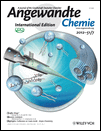Continuous-Flow Synthesis of the Anti-Malaria Drug Artemisinin†
We thank the Max-Planck Society for generous financial support. F.L. is the recipient of a postdoctoral fellowship from Fonds québécois de la recherche sur la nature et les technologies (FQRNT). Vapourtec is gratefully acknowledged for providing R2C+ and R4 flow-chemistry systems. We thank Dr. V. Mountain for critically editing this manuscript and Ms. C. Steininger for drawing Figure 1.
Graphical Abstract
Malaria is a serious global health issue. Artemisinin combination treatments are the first-line drugs, but supplies are limited because artemisinin is obtained solely by extraction from Artemisia annua. A continuous-flow process that converts dihydroartemisinic acid into artemisinin (see scheme) was shown to be an inexpensive and scalable process that can ensure a steady, affordable supply of artemisinin.





